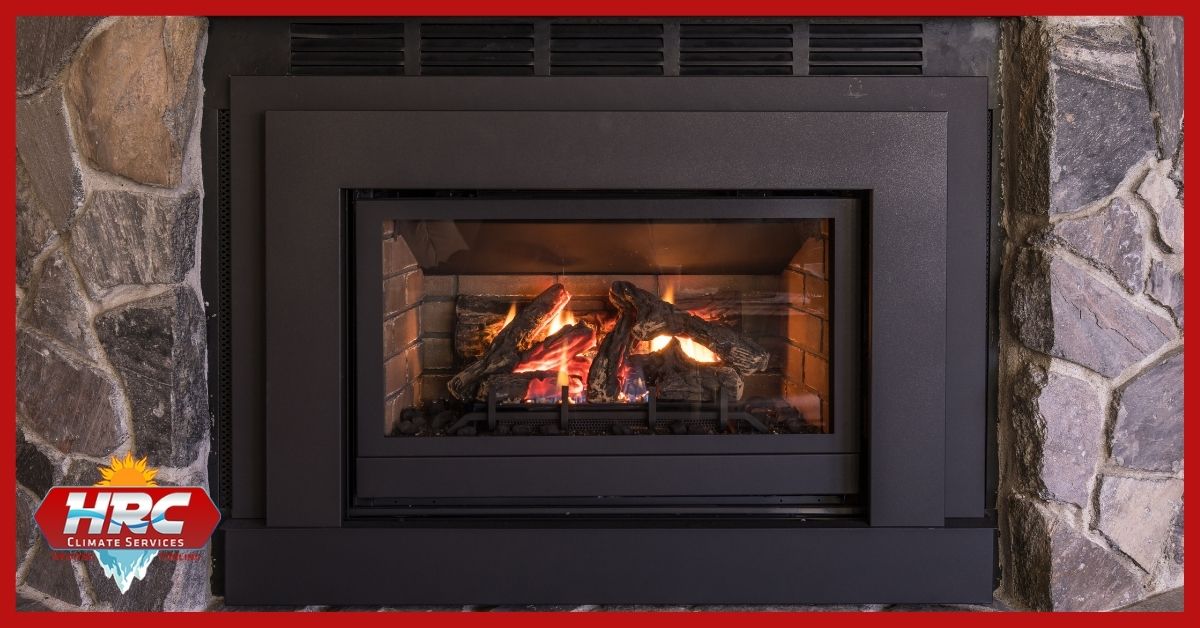After a long, cold winter day, nothing sounds better than curling up in front of the fireplace under a big blanket with loved ones. Fireplaces are not only beautiful statement pieces in a room, they are a gathering place for friends and family to be together and enjoy some relief from the chilled winter air.
If you, like many homeowners, feel left out of the fireplace trend, we’re here to tell you they are worth the hype. And making your home cozier with the help of a fireplace does not have to be a huge, messy remodel process.
Pull up a chair and wrap yourself in a blanket as we dive into all you need to know about gas log fireplaces and the warm atmosphere they can bring to your home.
Types of Gas Fireplaces
The most common gas fireplaces are direct vent and ventless.
Ventless Gas Fireplaces
The first type of gas fireplace is a ventless fireplace. Also known as a vent-free or unvented, this type of fireplace does not vent, as the name so obviously suggests. Instead, flames burn from ceramic logs and release air into the room. There’s no need to worry about emissions, though, because these flames do not produce exhaust. However, it is strongly suggested that you have a working carbon monoxide detector installed in the room with your fireplace.
A ventless fireplace can be connected to a propane or natural gas line. They pull oxygen from the room and mix it with the gas to produce the flames. Because there is no vent to pull away heat, these fireplaces are a great source of heat for a room.
Ventless is the way to go if you’re looking for a more affordable, flexible, and efficient fireplace option. However, they are not without a few disadvantages:
- Less realistic-looking flames
- Occasional smells
- Condensation and a rise in humidity
Direct Vent Gas Fireplaces
A direct vent fireplace also does not require a chimney for installation. Instead, these fireplaces need a direct vent connected to the outside of your home, whether it be on the side or above. This allows for air to be pulled in, used to create flames, and then be expelled back outside. Each fireplace comes with a glass panel that acts as a barrier between the flames and your home.
These fireplaces are loved for their realistic-looking flames. The ability to burn at a lower temperature allows for a bigger, more traditional yellow and orange flame as opposed to the small blue flames produced by ventless fireplaces. Direct vents are also considered the safer option due to their connection to the outdoors and a high-temperature glass panel protecting your home from emissions.
Some disadvantages to direct vent fireplaces include:
- More difficult installation
- No access to flames due to the glass pane
- Costly installation
Gas Fireplace FAQ
When you’re installing a new appliance or adding to your home in any way, you want to be sure you know all you need to about the item and the process. Here are a couple of commonly asked questions about gas fireplaces so you can feel confident in your decision.
Does a gas fireplace need to be cleaned?
Yes. just like a traditional fireplace, you will need to contact a professional once a year at the very least for inspection and cleaning. If you use your fireplace often, it is strongly suggested that you schedule cleanings more frequently.
Should I use natural gas or propane?
Both are great options, however, natural gas is less expensive and produces more heat.
Are gas fireplaces expensive to run?
Gas fireplaces are relatively inexpensive to run thanks to the low cost of natural gas. Most likely, you’ll be able to run the fireplace for under $1.00 per hour of use.
The team at HRC Climate Services is ready to get a gas fireplace into your home for this winter season. Give us a call at (801) 373-9440 to discuss your options and get your Utah County home feeling warm and cozy!



